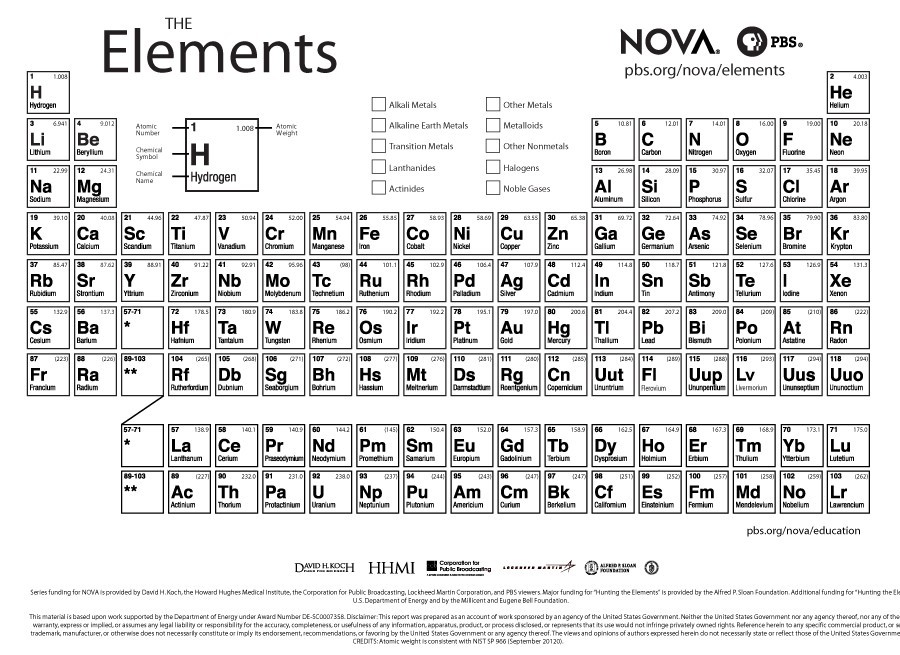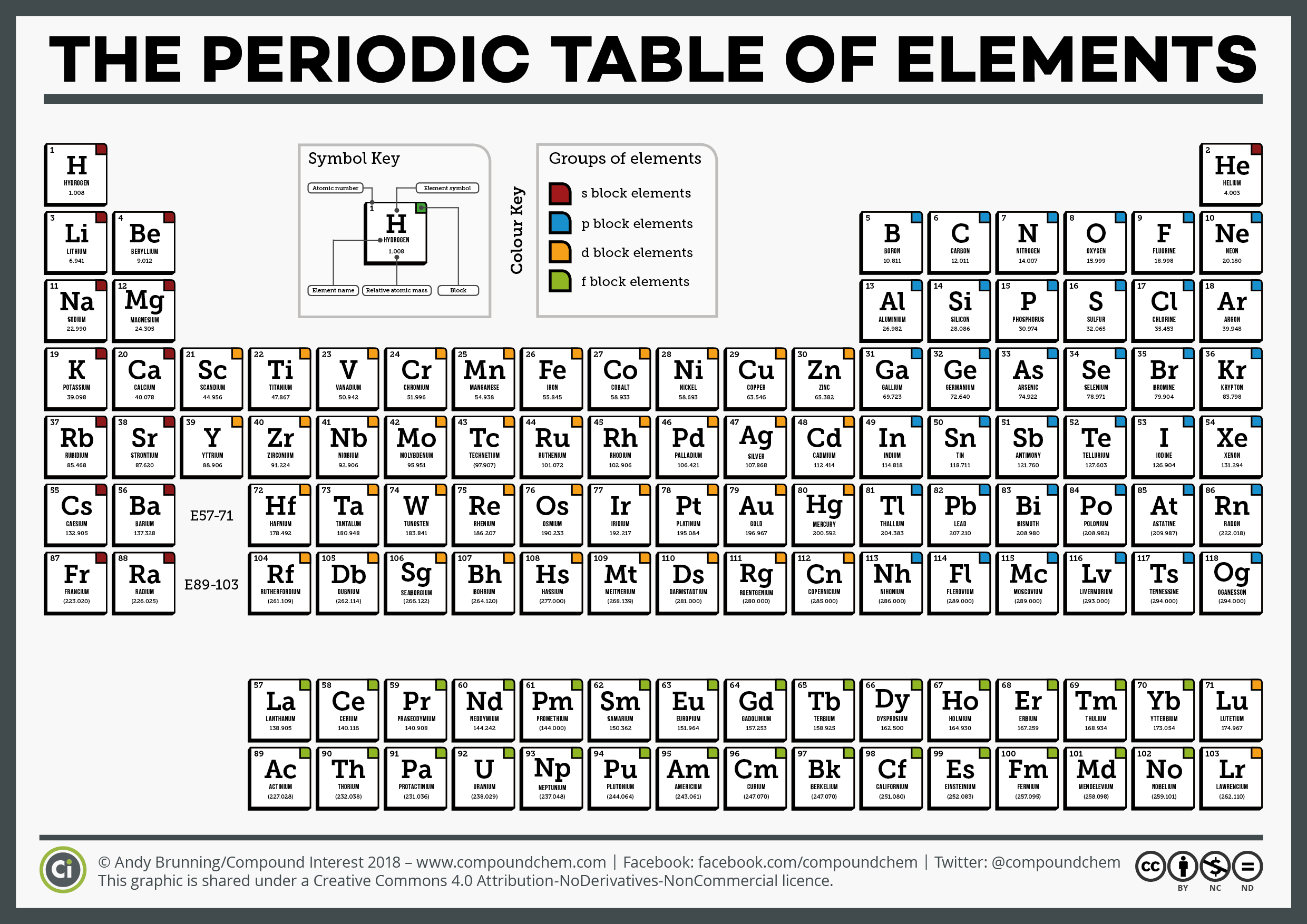
It is always a whole number greater than zero when used to identify an element. Each element can be identified from this number alone. It is represented by the symbol Z in equations because Z is the first letter in the word atomic number (definitely not true). The atomic number is the number of protons inside the nucleus of an atom. Two numbers are usually added to each cell. I can fill my periodic table with placeholder names and symbols and then replace them with real names and symbols as reality reveals itself to science. As a pleasant side effect, the systematic naming convention also makes it possible to name elements that haven't been synthesized yet (and even those that may never be synthesized). If laboratory A says it's found a way to synthesize element X and laboratories B and C can't synthesize element X using the same process, no one gets to name an element that day. This gives the scientific community time to verify claims of discovery. Naming elements is a much slower process now as a result. The International Union of Pure and Applied Chemistry (IUPAC), which establishes rules for things like naming chemical elements, invented systematic names to impose a kind of armistice on warring chemists. Naming rights go to the lab with priority in a discovery. Put the two together and you get Transfermium Wars - a bunch of chemists arguing about whose laboratory (and by proxy, whose superpower nation) was the best. At this time, nuclear chemists in the United States and the Soviet Union were synthesizing elements heavier than fermium (thus the adjective "transfermium") and the governments of the United States and the Soviet Union were embroiled in the Cold War (thus the noun "wars"). This last convention arose during the Transfermium Wars of the late 20th century, which, despite sounding like a science fiction battle for supremacy of the galaxy, was actually nothing more than an academic argument. How this scenario plays out is open to some speculation. Some have proposed naming it feynmanium (Fy) after the American physicist Richard Feynman who predicted it would be the heaviest element possible. If and when it is discovered it will be called this for a while.
#CLEAR PRINTABLE PERIODIC TABLE OF ELEMENTS WITH NAMES HOW TO#
We have excluded elements above 108 on this periodic table for the simple reason that the larger elements don’t really exist in the real world.Are you still here? Well, I guess I should tell you something about the periodic table - like how to read it. You might find a table of elements showing element 115 or even 118 elements total. There is a Netflix documentary about this topic entitled Bob Lazar: Area 51 & Flying Saucers. The elements above 92 are strange, like for example element 115 that was reportedly found at Area 51. The parenthesis are a scientific way of saying this number is guesstimated, at best, and we really don’t know much about these elements because they are artificial and tend to disintegrate rapidly. You might note in the periodic table the mass numbers are in parenthesis for elements 93 and above. At least you won’t be finding any in this lifetime.


As such, elements above 92 don’t really exist, except under special laboratory conditions. All elements above atomic number 92 are created artificially in laboratories, and generally they are extremely unstable and tend to disintegrate rapidly.

As such, it’s highly unstable and unable to exist for very long. It is element 94, making it bigger than uranium. In 1940, a new element, plutonium, was created in a laboratory. Element 92 is uranium, the biggest element that occurs naturally on Earth. Before the year 1940, it was believed that only 92 elements existed. (See the original work of Dmitri Mendeleev here.) At that time, scientists were still discovering new elements almost every year. The original table of the elements, credited to Dmitri Mendeleev in 1871, had only 56 elements.

The table of elements shown here has 108 elements.


 0 kommentar(er)
0 kommentar(er)
